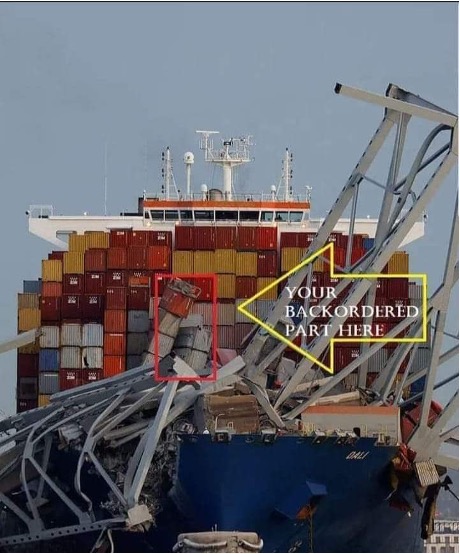The book, Fooled by Randomness, published in 2001, is credited for the resurgence of the term “Black Swan Event.” Amongst other topics, the book offers strategies for making better decisions in an uncertain world. As an example, to foresee costly delays that ultimately ensnare a company’s ability to produce goods or export goods, supply chain managers must continually gaze into the crystal ball.
I have argued that the continuity of supply chains reaches far beyond the realm of supply chain executives. In fact, it is an area of concern for all management levels of the organization, including the CFO.
The effects of failing to maintain the continuity of supply are many. If you don’t have the right supplies, you can’t build your product or deliver your service. Disruptions to this part of your business aren’t just harmful to your margins; they can be fatal for your business and have a material impact on financial results.
Take in point the current crisis brought on by a container ship that felled the Francis Scott Key bridge in less than 2 seconds.
In response, many supply-chain managers will consider two options.
- Wait it out, OR
- Respond intelligently. After all, when disaster hits, your first concern is likely how to keep your business running as normal as possible.
How you respond to the crisis may be key to your survival.
The key?
Getting current, accurate data from your suppliers to assess the impact on your business operations will become critical to success. But just knowing what is going on is not enough. Having an intelligent response means that you can actually do something with the information that visibility is providing.
So, how do you create this intelligent response?
Respond effectively to new information, know what your options are, and act on that knowledge.
Knowing what your options are starts with visibility and takes off from there. You need comprehensive visibility across your trading partner network to know what your alternatives are—whether in terms of alternate sources of supply for a missing component, or alternate means of transportation in the case of a logistics disruption. You need to be able to see everything, but also know what’s relevant (i.e., what components, products, orders, customers, or routes are affected by the trouble you have identified).
A silver lining?
Allianz Commercial released figures showing how there were almost 2,000 incidents over the past decade involving ships colliding with port infrastructure — like running into harbor walls, groundings, or damaging cranes. Of those incidents, only 203 involved container ships, and there wasn’t data available on bridge incidents. I suspect all new bridge renovations will now consider mitigating this type of disaster if not outright require it.
The SBDC Go Global Initiative is here to assist you in international trade and can help by providing consulting resources to build an effective supply chain and logistics strategy.

